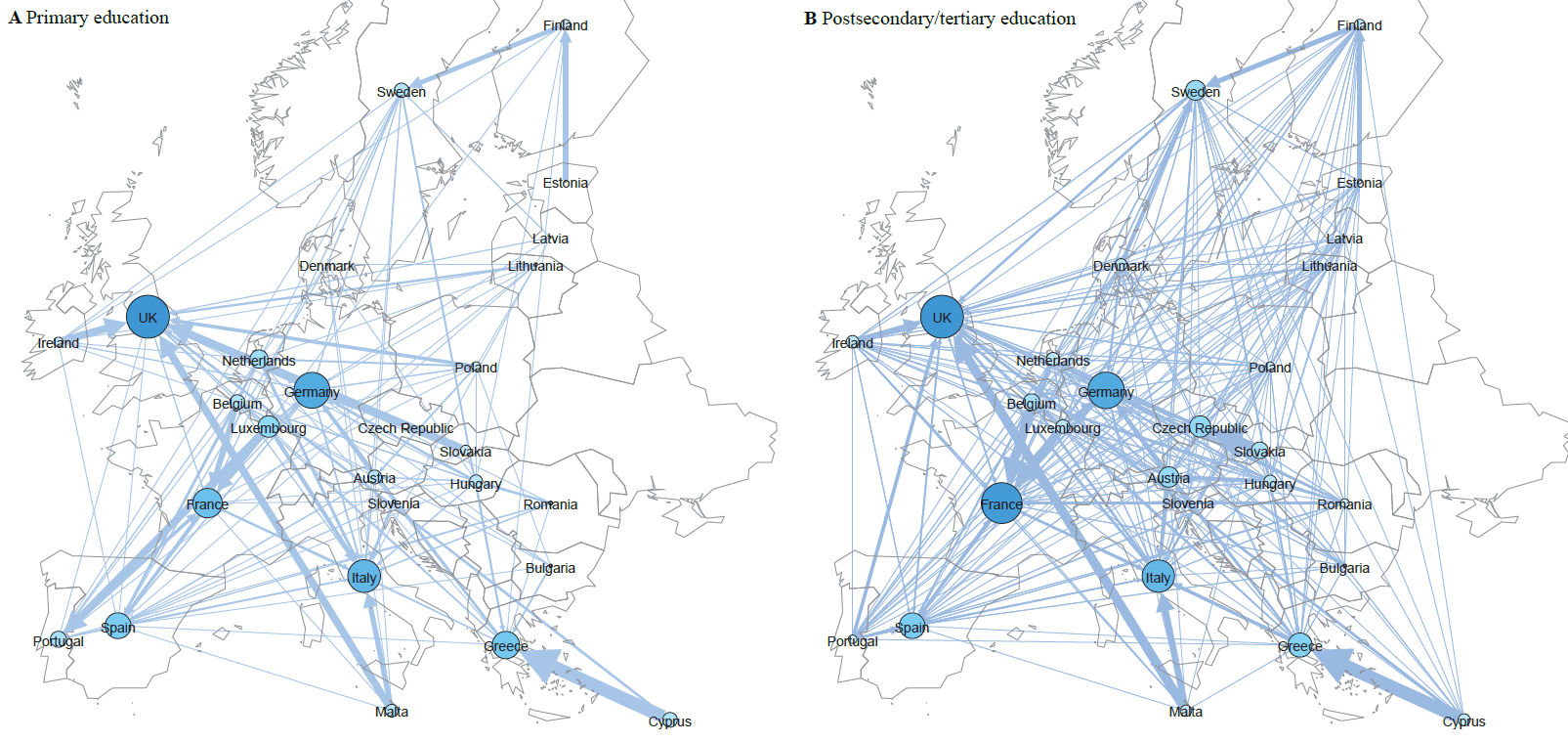|
My article "Visualizing the Regionalized Structure of Mobility between Countries Worldwide" is now published open access in Socius's innovative Visualizations series. Here, geographic mapping, algorithm-based community detection, network visualization, and conventional line plots are combined to display the network structure of more than two billion estimated trips between countries worldwide in 2016, together with information about the (non)evolution of this structure over time. The graph reveals that transnational mobility is highly regionalized: 80 percent of all human movements between countries occur within world regions. Despite strong increases in the absolute amount of transnational mobility, this share remains extremely stable between 2011 and 2016. The community detection algorithm reveals six mobility clusters that clearly correspond to world regions: Africa, Asia and Oceania, the Americas, Eurasia, Europe, and the Middle East. This stable, regionalized structure suggests that a fully globalized “world society” is unlikely to emerge, as social ties remain parochial, even in the transnational sphere.
The paper "The Power of Contact: Europe as a Network of Transnational Attachment", coauthored with Jan Delhey, Monika Verbalyte, and Auke Aplowski, has just been published online first at the European Journal of Political Research. A free pre-print version is available here. In this article, we propose transnational attachment as a novel indicator of sense of community in Europe, arguing that this hitherto neglected dimension is substantially and structurally different from alternative ones such as cross-border trust and identification. Combining Eurobarometer 73.3 data on ties between all EU-27 countries with further dyadic data, we show empirically that the European network of transnational attachment has an asymmetric core-periphery structure centered around five extremely popular countries (the UK, France, Germany, Italy, and Spain). In line with transactionalist theory, cross-border mobility and communication are strongly related to transnational attachment. Furthermore, we demonstrate that the network of transnational attachment is much denser among those with a higher than among those with a lower level of education. Our results suggest that offering European citizens incentives to travel to peripheral countries may help counterbalance the current asymmetric structure of transnational attachment, thereby increasing Europe’s social cohesion.
"On the Europeanization of Actions and Attitudes: A Macrosociological Comparison of the EU Member States", a paper co-authored with Jan Delhey, has been published (in German) at Berliner Journal für Soziologie in a special issue on Horizontal Europeanization edited by Christian Lahusen and Susanne Pernicka.
A new article titled "People Matter: Recent Sociological Contributions to Understanding European Integration from Below", co-authored with Jan Delhey, has just appeared in the Council of European Studies' journal Perspectives on Europe. The Article summarizes some of our findings from the first funding phase of the Horizontal Europeanization project (2012-15), as well as some insights from my PhD project Mapping the Transnational World. It is available online for free.
|
Categories
All
Archives
November 2023
|





 RSS Feed
RSS Feed